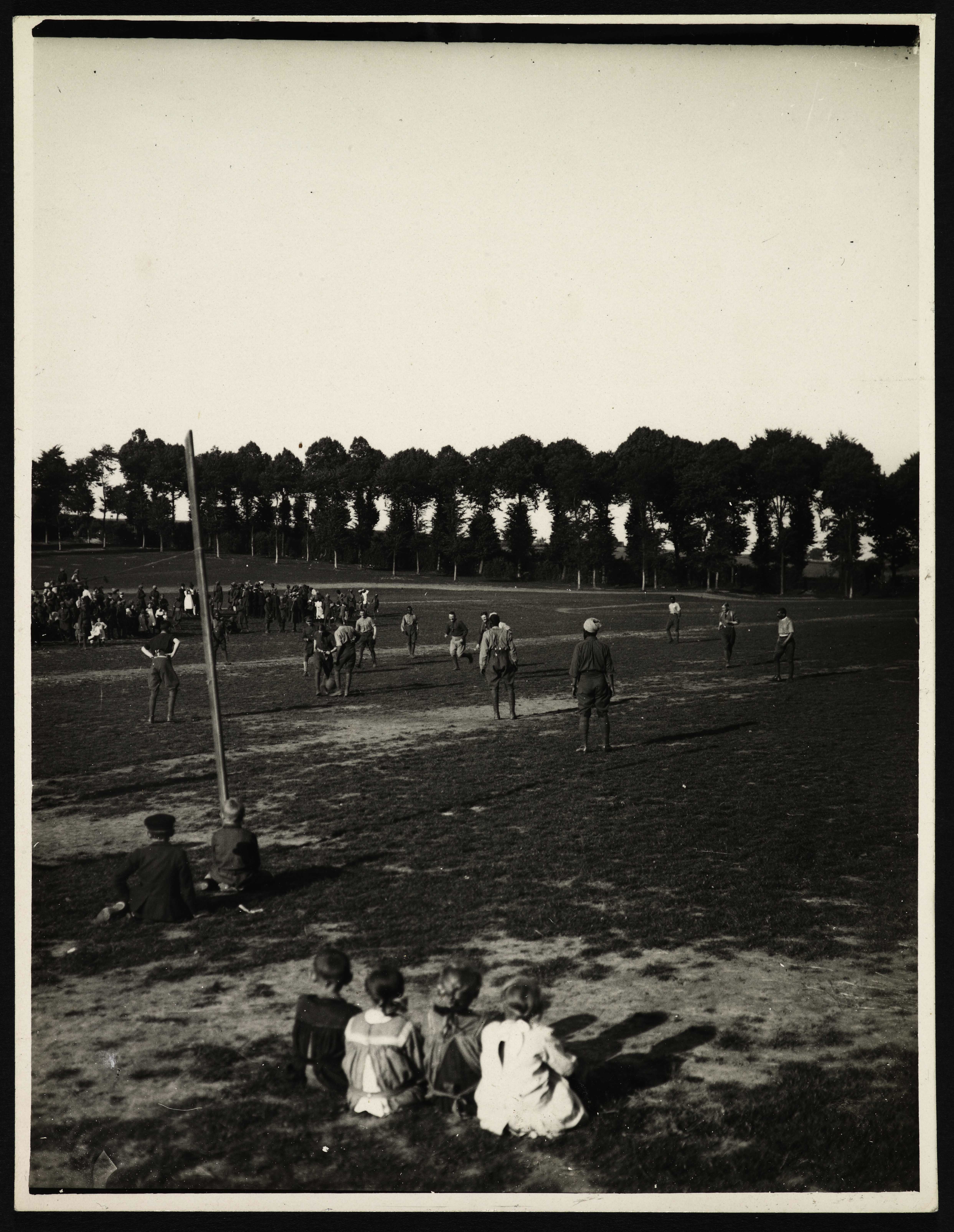New stories of football played during World War One are being shared ahead of the 102nd anniversary of 1914’s iconic Christmas Truce match.
Letters and photographs from the period have been brought to light by Dr Islam Issa, Lecturer in English Literature at Birmingham City University, which show the role football played for soldiers during the Great War.
The famed Christmas Truce match is believed to have been played in No Man’s Land on Christmas Day 1914 and the discovered items show that football was a regular part of the troops’ everyday lives.
The pieces include a previously unpublished Christmas letter from a soldier based in France explaining how regularly he trains for the football team, and a photograph showing French children watch a British cavalry regiment play a match against Indian soldiers of the 18th Lancers.
Dr Issa has been researching the Muslim contribution to the First World War by going through thousands of archives, personal letters and documents as part of an exhibition commissioned by and held at the British Muslim Heritage Centre.
The materials have shown how frequently football was played and that the Allies’ football teams included soldiers from Commonwealth countries such as the Muslim and Indian servicemen featured in the exhibition.
Dr Islam Issa said: “It was nice to make some little but telling findings about the role of sport for the soldiers, particularly in the middle of all the other difficulties they were facing.”
Although some historians have questioned the accuracy of the Christmas Truce match, the research demonstrates just how prominent and widespread football was throughout World War One.
Dr Issa said: “The Christmas Truce match is a popular story because it reminds us that regular people were involved in the war and how political choices don’t always represent common people.
“What is for sure is that football was widespread during the World War One and was played by soldiers all around the world. They weren’t always working or fighting – a lot of their time was spent behind the lines, so football was a key pastime.
“Officers encouraged the soldiers to play football in order to increase morale and perhaps to keep their fitness levels up too. In fact, in England, the Football Association and some football clubs would put posters up to help with the initial recruitment effort”.
The pieces include a previously unreported letter from Christmas 1917 (dated December 27) from soldier Nisar Muhammed Khan to his brother in Peshawar, located at the time in British India and now part of present-day Pakistan.
In the letter he apologises for his lack of contact and explaining that he has little free time due to training every morning for the football team.
He says: “I have received many letters from you, but have been unable to answer them for lack of time, because, my dear brother … I have been put into the football team.
“Every day, we have to go to the office at 10 or 12 a.m. (sic) for football, and the office is about two miles away. So I get no time at all.”
Dr Issa said: “I spent days in archives reading letters so when I found one by an Indian soldier who was in an army football team, it did make me smile.
“I had three thoughts about it. The first is that he’s complaining about being in the team because of the commitment, since training every morning means he can’t write home as often. That touched me as really human because it’s not exactly what you expect soldiers at war to be complaining about.
“It also sounds like this particular soldier was scouted, because he doesn’t say that he chose to join. To me, the fact he may have been spotted while playing confirms that having a kick-about was more common than we think.
“On top of that, this is the only such reference I came across while researching Muslim soldiers in the war, suggesting that the football teams would have been predominantly English or French, so it’s heartening to know that soldiers from different backgrounds were playing on the same team”.
The Stories of Sacrifice exhibition is open for the public at the British Muslim Heritage Centre in Manchester.







